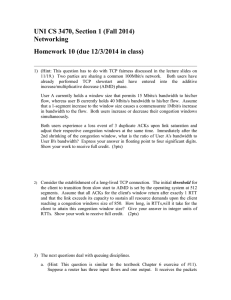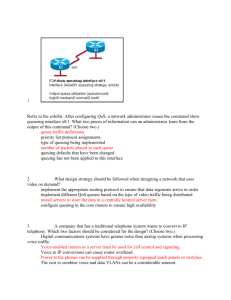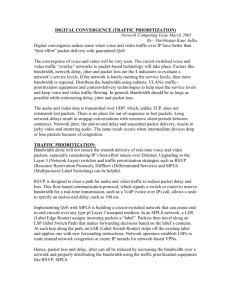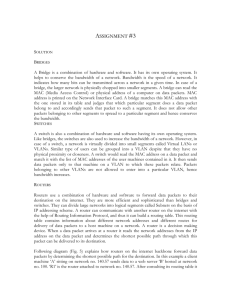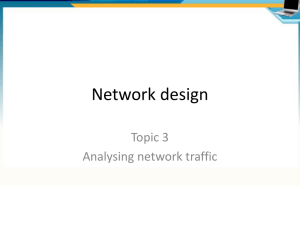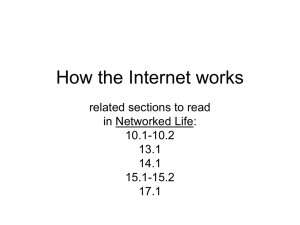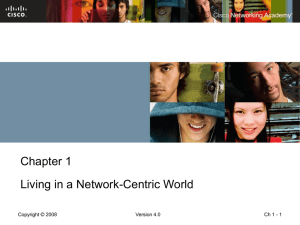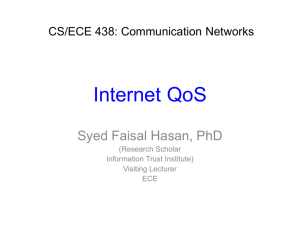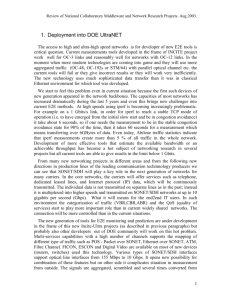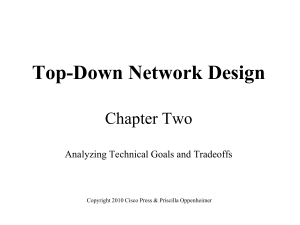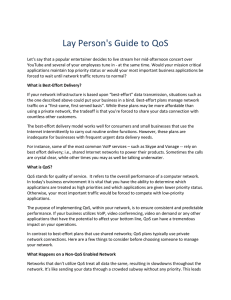Understanding QoS
advertisement
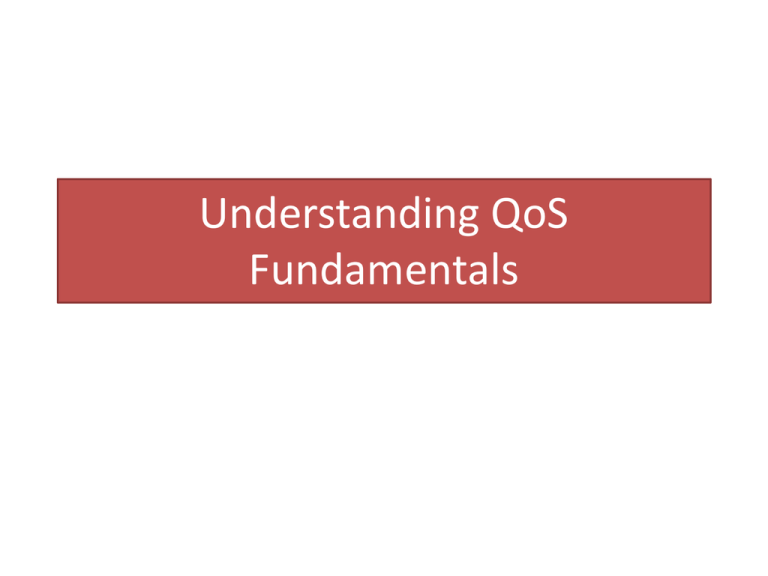
Understanding QoS Fundamentals The basic overview for QoS is “Who goes 1st?” from an exit perspective on a switch or router. ‘Evil Villains’ in the network world 1. 2. 3. 4. Lack of bandwidth (Not really a fix, only really for temp congestion) Packet Loss (Directly with Voice) Delay (Directly with Voice) Jitter (Directly with Voice) Packet Loss = If there is not enough bandwidth available on a WAN link, the router will queue the packets in memory, when the memory is full the term ‘taildrop’ is used as the doors are closed on the router and it will no longer accept packets. QoS is able to decide WHAT packets are dropped, to ensure voice is not dropped. Delay = Cisco best practice of no higher than 150ms. Voice is delay sensitive. Jitter = Variable delay. Not flat delay or consistent round trip times. (Spikey) A Cisco router and IP phone have a ‘de-jitter’ buffer feature where it can read ahead and dynamically adjust. If this buffer is full then the packet is lost. Three models for QoS Tagging Best Effort – Default state on a router (Post Office analogy I will send your letter but can’t guarantee it’s delivery) CoS for L2 traffic Class Of Service Integrated Services – (INT SERV) This model can reserve bandwidth for classified traffic. This is not a scalable solution. (Private Jet Analogy) ToS for L3 traffic Type Of Service Differentiated Services – (DIFF SERV) Most popular QoS model. Packets are marked with levels. No reserved bandwidth. Only for queuing packets. QoS Toolbelt – Classifying and Marking • Classification involves identifying and grouping different traffic types. • Marking tags or ‘colours’ on the packet so it can be quickly recognised elsewhere on the network. *Citrix traffic is extremely delay sensitive Queueing Strategies: Weighted Fair Queuing (WFQ) Number of queues: Per-flow Method: Weighted Fair (Low senders are prioritised) Delay Guarantee: No Bandwidth Guarantee: No Queuing Strategies: Class Based WFQ (CBWFQ) Number of queues: up to 256 classes Method: N/A Delay Guarantee: No Bandwidth Guarantee: Yes *Not great for voice Example: For every 50 HTTP packets send 20 FTP packets, for every 20 FTP packets sent 10 TELNET packets etc… Not ideal… Queuing Strategies: Low Latency Queuing (LLQ) Number of queues: 1 Priority Queue (PQ) + CBWFQ Method: N/A Delay Guarantee: Yes for PQ Bandwidth Guarantee: Yes *Preferred strategy for Voice traffic. User Expectations Golden QoS Rule: “User application experience should meet or beat what the user is accustomed to regardless of the new applications added to the network.”
